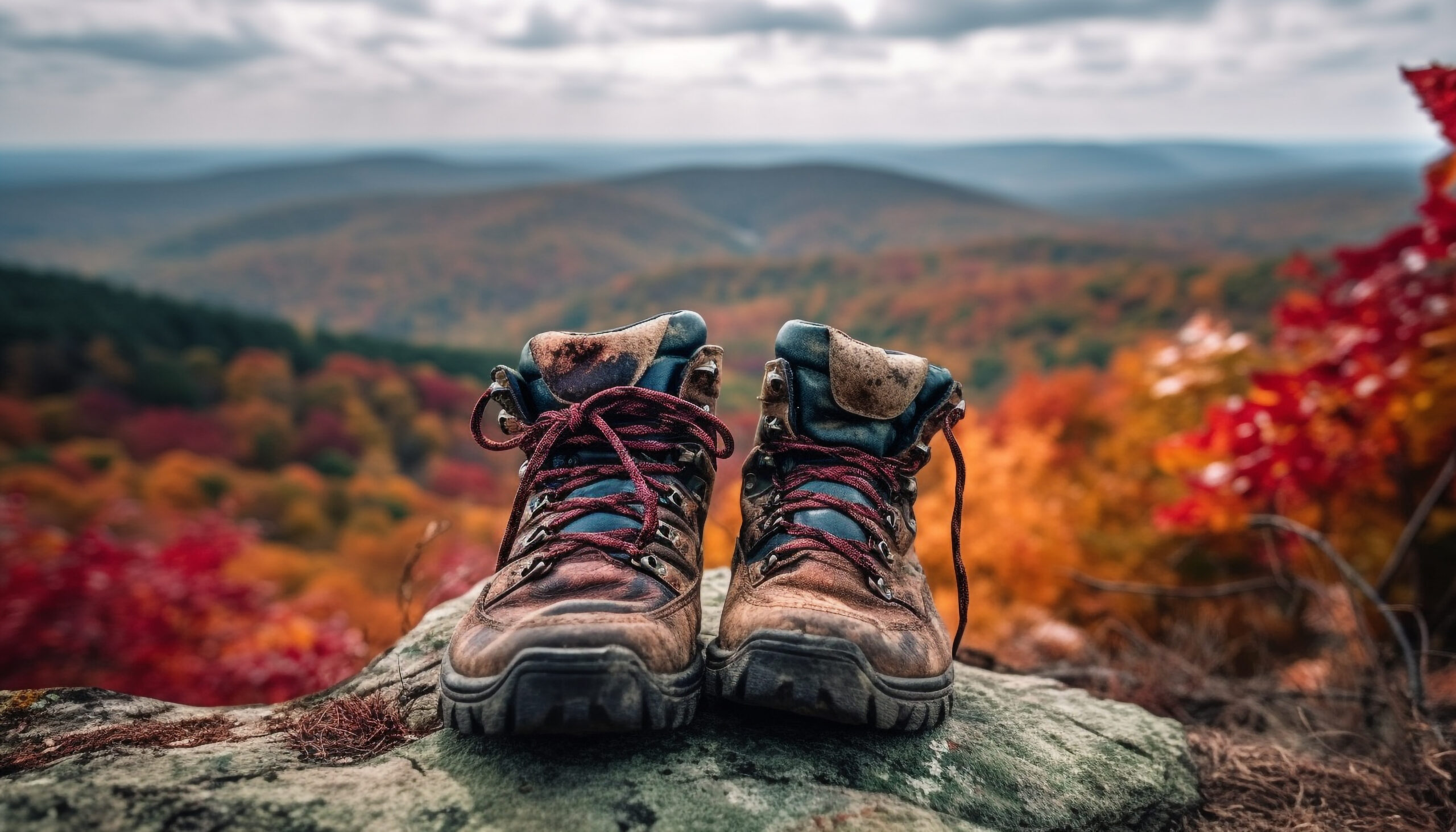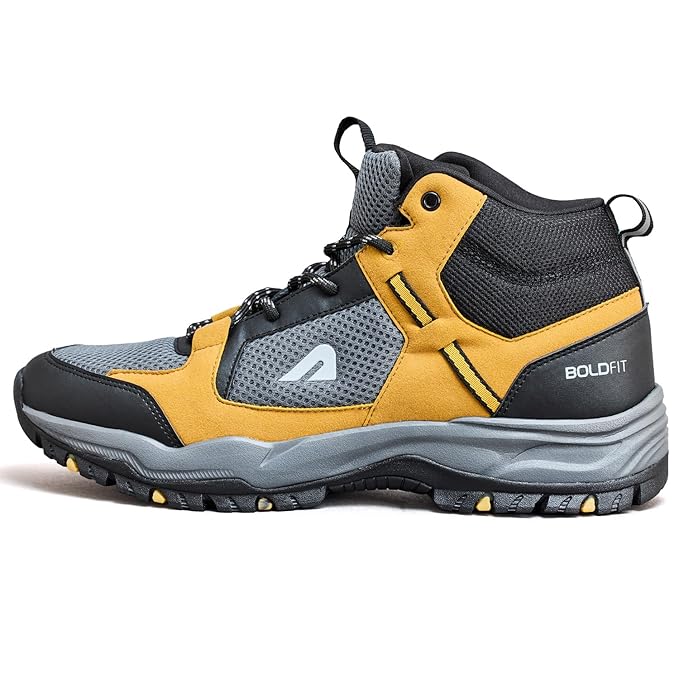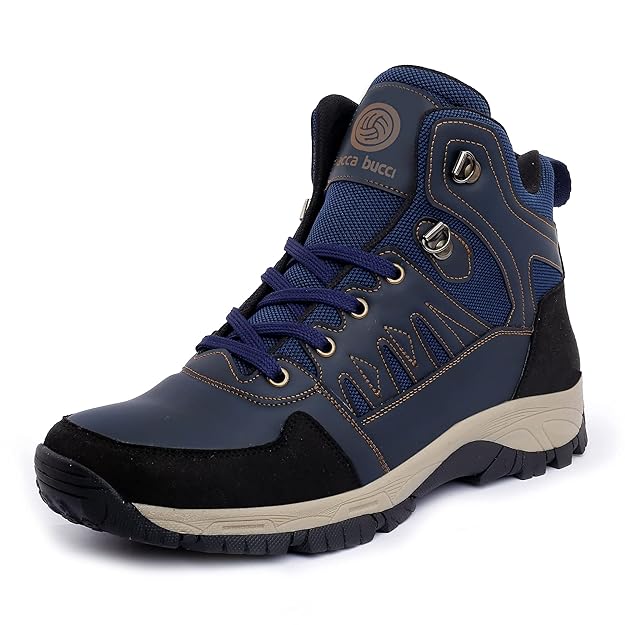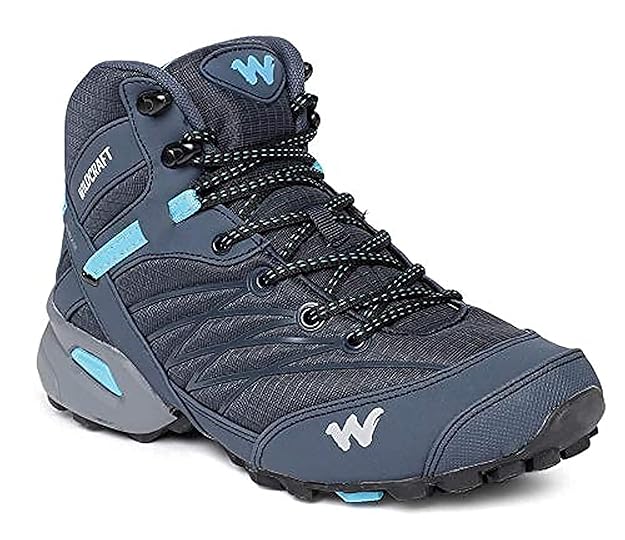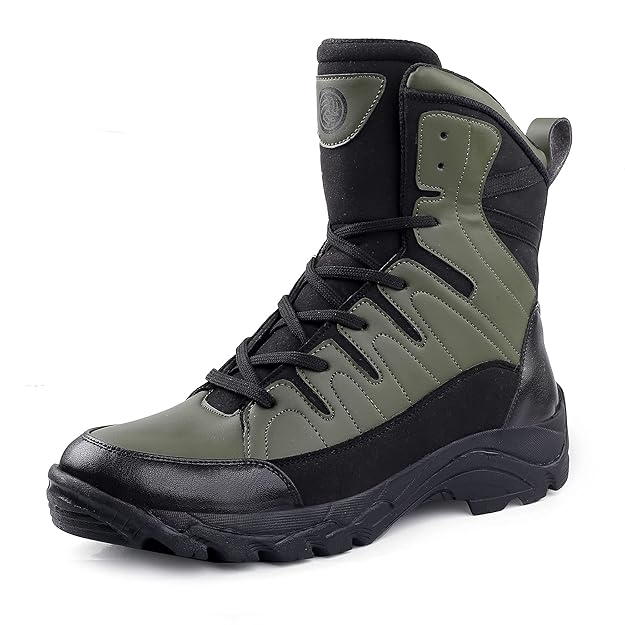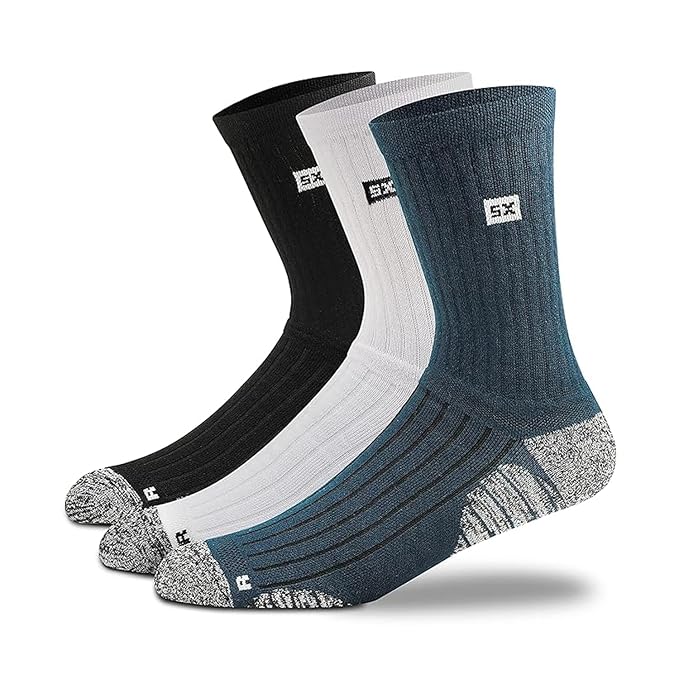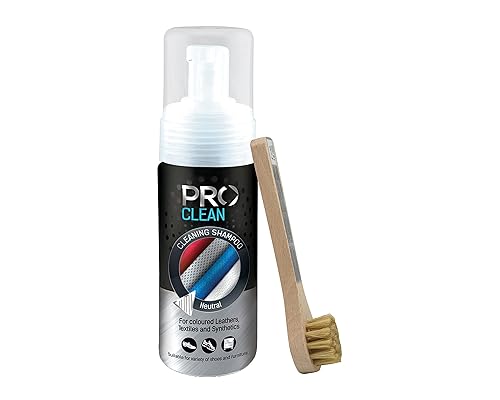Hiking is one of the most fulfilling ways to explore the great outdoors. Without the proper footwear, your adventure can swiftly become an uncomfortable ordeal. Therefore, the key to a successful hike lies in choosing the perfect hiking shoes. These shoes not only provide support and durability but also ensure comfort as you trek through various terrains. Whether you’re a beginner or experienced hiker, choosing the right shoes improves performance. It also protects your feet from blisters, fatigue, and injuries.
This blog will guide you on understanding hiking shoes and their key features. It helps you make an informed choice to enjoy your outdoor adventure.
Table of Contents
Why Are Hiking Shoes So Important?
Hiking shoes are more than footwear. They offer stability and support for hiking on various terrains. Unlike regular shoes, hiking shoes handle rough surfaces, steep inclines, and slippery slopes. They excel in challenging conditions. Hiking shoes provide key features like traction, ankle support, and cushioning for your hike. These features make hiking shoes essential for a successful and safe outdoor adventure.
For longer hikes, investing in high-quality hiking shoes is crucial to prevent injuries such as sprained ankles or muscle strain. These shoes are designed to absorb shock. They are better for long walks than running shoes. Choosing the right hiking shoes ensures a smooth journey. They keep your feet comfortable on any path.
Read Also: How to Set Gym in Small Spaces
Types of Hiking Shoes
1. Lightweight Hiking Shoes
Ideal for day hikes and short trips, lightweight shoes provide flexibility and are perfect for well-maintained trails. Similar to trail running shoes, they offer comfort for those seeking agility and lightness. However, it’s important to note that they may not offer ample support for challenging terrains. Therefore, they are best suited for shorter hikes on even ground.
2. Midweight Hiking Shoes
Midweight hiking shoes strike a perfect balance between lightweight options and heavy-duty boots. As a result, they offer enhanced stability, making them ideal for moderate trails and longer hikes. Additionally, these shoes provide better ankle support and are generally more durable compared to lighter models.
3. Heavy-Duty Hiking Boots
For serious hikers tackling challenging terrains, heavy-duty hiking boots are the ideal choice. These boots protect your feet and ankles on rough trails and sharp rocks. They also support steep climbs. Although they are heavier, they provide unmatched durability and protection, particularly when hiking with a heavy backpack.
4. Waterproof Hiking Shoes
Weather conditions can be unpredictable during hikes, and wet environments can pose significant risks. Therefore, waterproof hiking shoes are specifically designed to keep your feet dry and comfortable in rainy or muddy conditions. Additionally, these shoes feature water-resistant membranes that shield your feet from moisture, while still allowing breathability to prevent overheating.
Features to Look for in Hiking Shoes
When shopping for hiking shoes, consider features that ensure proper support for your adventures. These features will help your shoes perform well during outdoor activities.To help you make the best choice, here are some essential elements you should keep in mind:
1. Traction
Traction is important when hiking on uneven or slippery surfaces. Shoes with durable outsoles provide excellent grip. Some outsoles are designed for specific terrains. It’s important to choose shoes with the right traction.
2. Cushioning
Long hikes can be tough on your feet. Therefore, it’s essential to choose shoes with sufficient cushioning to absorb shock and minimize joint strain. Choose shoes with a thick midsole made of EVA or PU for better cushioning. These materials provide excellent comfort and support for your feet during hikes. This will help keep your feet comfortable and supported throughout your journey.
3. Ankle Support
Ankle injuries are quite common among hikers, particularly when navigating rocky or uneven terrain. Shoes with a high-cut design provide extra ankle support to prevent sprains. This design keeps your foot stable on tough trails. While low-cut shoes may be lighter and more flexible, they do sacrifice some level of protection. Therefore, choosing the right design based on your trail conditions is essential for both comfort and safety.

4. Waterproofing
If you intend to hike in wet or muddy conditions, waterproof hiking shoes are a necessity. Moreover, the membrane inside the shoes should effectively prevent water from entering while still allowing your feet to breathe. Gore-Tex is a common material used in waterproof shoes. However, other alternatives are available too.
5. Weight
Heavier shoes provide greater durability and support, whereas lighter shoes offer more flexibility and comfort for shorter hikes. Ultimately, the choice between light and heavy depends on your hiking environment. For instance, if you’re trekking across challenging terrains, heavier shoes will deliver the durability and protection necessary for the journey.
Read Also: Pre Workout Supplements
How to Choose the Right Fit for Hiking Shoes
A proper fit is essential when choosing hiking shoes, as it directly impacts comfort and performance. Shoes that are too tight or loose can cause discomfort and blisters. This can lead to foot injuries. Therefore, it’s important to follow these tips to ensure you find the right fit:
1. Try Them On With Hiking Socks
To get an accurate fit, wear the same socks you plan to use while hiking. This will ensure the shoes feel comfortable during your outdoor adventures. This will help ensure a more realistic fit and improve your overall comfort during your trek.
2. Check for Enough Toe Room
Ensure there is ample room in the toe box, allowing your toes to move comfortably. Without extra room, your toes may hit the shoe’s front during descents, causing bruised toenails. This can lead to discomfort while hiking.
3. Walk Around in the Store
Take your time walking around the store when trying on new hiking shoes. Additionally, try going up and down stairs to assess how they feel on uneven surfaces. Ultimately, the shoes should fit comfortably, providing support without being too tight.
4. Break Them In
Avoid starting a long hike with brand-new shoes. Instead, take the time to break them in by wearing them around the house or going on short walks. This helps soften the material and ensures that your shoes are comfortable, so you can enjoy your hike without discomfort.
Read Also: Ultimate Outdoor Games
Common Mistakes When Buying Hiking Shoes
When buying hiking shoes, there are several common mistakes people tend to make, which can ultimately lead to discomfort or injury. Therefore, to avoid these pitfalls, consider the following tips:
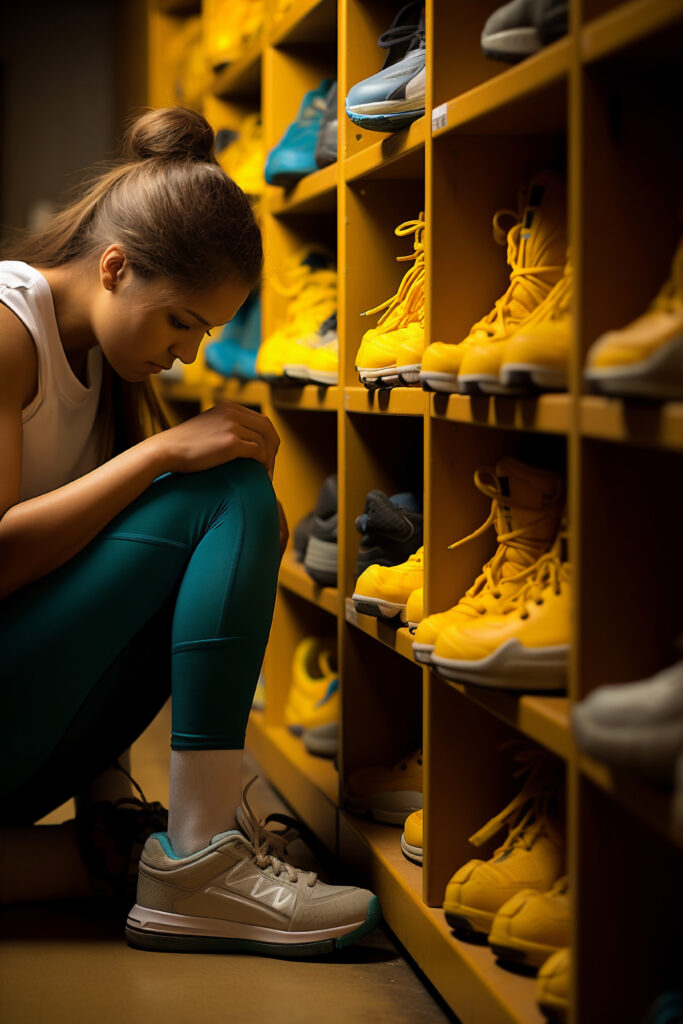
1. Focusing Only on Price
While budget is certainly important, it’s crucial not to let price be the sole factor in your decision. In fact, cheaper shoes may lack the support or durability needed for serious hikes. Therefore, it’s a better option to invest in a high-quality, durable pair that will last.
2. Ignoring Terrain
Not all hiking shoes are ideal for every type of terrain. For example, purchasing shoes intended for easy trails when you plan to tackle rocky or steep areas can result in discomfort and potential injury. Therefore, it’s essential to select shoes that are specifically designed to match the difficulty of the trail.
3. Forgetting to Consider Weather
If you’re hiking in wet, cold, or humid conditions, it’s crucial to choose shoes that can withstand these elements. In such cases, waterproof and breathable materials should be a priority, especially when faced with unpredictable weather.
Read Also: Best Indoor Games
How to Maintain Hiking Shoes for Longevity
Good hiking shoes are a valuable investment, and with proper care, you can extend their lifespan. To help you maintain their quality, here are a few useful maintenance tips:
1. Clean Them After Every Hike
Dirt and debris can slowly wear down the materials over time. Therefore, after each hike, it’s important to clean your shoes using a brush and mild soap. Additionally, allow them to dry naturally in a shaded spot to preserve their quality.
2. Use Waterproofing Sprays
The waterproof membrane in hiking shoes can lose its effectiveness over time. To maintain their water resistance, reapply waterproofing sprays or treatments regularly.
3. Store Them Properly
To prevent damage, avoid leaving your hiking shoes in direct sunlight for long periods, as UV rays can weaken their materials. Instead, store them in a cool, dry place, which will help maintain their shape and durability over time.
FAQs
1. How long should hiking shoes last?
The lifespan of hiking shoes depends on the type of terrain and frequency of use. On average, they last between 500 to 1000 miles, but heavy-duty boots may last longer with proper care.
2. Is it okay to wear running shoes for hiking?
While running shoes might be fine for very light trails, they don’t provide the support and durability necessary for tougher hikes. For the best safety and performance, it’s wiser to opt for purpose-built hiking shoes.
3. Should hiking shoes fit snugly or have a looser fit?
Hiking shoes need to fit snugly without being overly tight. There should be sufficient space in the toe box for you to wiggle your toes comfortably, and your heel should remain secure to help prevent blisters.
4. Are waterproof hiking shoes necessary?
If you’re hiking in wet or unpredictable weather, waterproof hiking shoes are a must. They will keep your feet dry and comfortable, preventing blisters and other issues caused by moisture.
Conclusion
Selecting the perfect hiking shoes is crucial for achieving your best performance on the trail. The ideal pair offers comfort, support, and stability, so you can enjoy the scenic outdoors without worrying about foot pain. By familiarizing yourself with the different styles, essential features, and the importance of a well-fitted shoe, you’ll be well-prepared to tackle any trail with confidence. Additionally, remember to maintain your shoes properly to keep them durable for countless outdoor adventures ahead!

